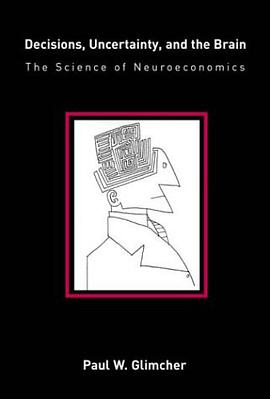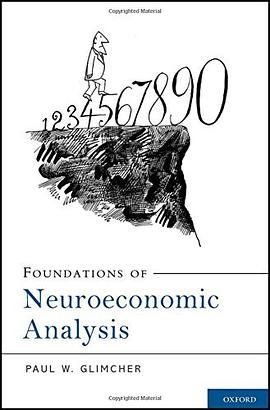Decisions, Uncertainty, and the Brain 豆瓣
作者:
Paul W. Glimcher
The MIT Press
2004
- 9
From Scientific American
The notion that the brain and central nervous system are made of circuits that process stimuli and evoke bodily responses is a founding principle of neuroscience. And we humans believe that once we understand every neural pathway, we will be able to predict a motor response to every sensory input—from feeling the tug of a fish on a hook to catching your spouse in bed with someone else. All we have to do is build the right deterministic model of the brain. In Decisions, Uncertainty, and the Brain: The Science of Neuroeconomics, Paul W. Glimcher, an associate professor of neural science and psychology at New York University, recounts how the history of neuroscience has brought humankind to this reflex-based model—and then explains why it is insufficient. Simple behaviors might arise from stimulus-response rules, he allows, but complex behaviors are far less predictable. For example, the brain can weigh value and risk, even with incomplete or uncertain information. But how? Fortunately, Glimcher points out, there is already a science to answer that question: economics, particularly game theory. Other scientists have tapped economic theory to explain the natural world. In the 1960s certain ecologists used the discipline to model how animals forage for food and choose a mate. Glimcher makes a case that "neuroeconomics" can complete our understanding of our brains. He cites his own experiments on humans and monkeys to show how economic principles can accurately represent intricate thought processes, in situations rife with competing values and interests. As the book proceeds, the going can get tough, but the historical insight is worth the trip. Readers may feel a bit unsatisfied when Glimcher notes that a unified theory of neuroeconomics has yet to be written and then admits that he doesn’t know what this theory would look like. Yet he rises to the occasion by suggesting how scientists could begin to apply neuroeconomics to define the optimal course of action that a person might select and by providing a mathematical route for deriving that solution. In this way, Glimcher says, scientists can devise a better understanding of how the brain makes complex decisions in an uncertain world.
Dennis Watkins --This text refers to the Paperback edition.
Review
"Decisions, Uncertainty, and the Brain is a worthwhile book."
-- William H. Redmond, Journal of Economic Issues
"The book is an absorbing introduction to the emerging field of neuroeconomics."
-- Kenneth Silber, Tech Central Station
"The book presents an extraordinary, thought-provoking, challenging, and immensely charming account of present and future neuroscience."
-- Wolfram Schultz, Science
"This book will surely ignite discussion and soul searching among serious neuroscientists..."
-- P. Read Montague, Nature
"Glimcher has achieved an extraordinary synthesis of perspectives that have remained isolated for far too long. He views the brain as a system designed to maximize neither pleasure nor social or economic success, but biological fitness instead. He goes on to show why this matters in fields as disparate as psychology, economics, and his own field of neurobiology. This is an impressive and highly readable journey through vast areas of scientific and philosophical knowledge."
--Alex Kacelnik, Professor of Behavioural Ecology, Oxford University
"Glimcher's seminal book is a must-read in the emerging field of neuroeconomics. His analysis of the biological foundations of economic behavior makes for exciting reading for economists and neuroscientists alike, who will be fascinated by his insightful research connecting neuronal firing and economic decision making."
--Kevin A. McCabe, Professor of Economics and Law, and Director of the Neuroeconomics Laboratory at the Interdisciplinary Center for Economic Science, George Mason University
"Glimcher does extraordinary neuroscience and relates it to the most fundamental of all questions: how the brain makes decisions. His use of game theory to characterize decision making in both humans and monkeys under conditions of strategic conflict is unique. What could be more important than studying the neurobiological basis of volitional choice in earnest? The implications and applications of his work are singular."
--Michael S. Gazzaniga, Center for Cognitive Neuroscience, Dartmouth College
The notion that the brain and central nervous system are made of circuits that process stimuli and evoke bodily responses is a founding principle of neuroscience. And we humans believe that once we understand every neural pathway, we will be able to predict a motor response to every sensory input—from feeling the tug of a fish on a hook to catching your spouse in bed with someone else. All we have to do is build the right deterministic model of the brain. In Decisions, Uncertainty, and the Brain: The Science of Neuroeconomics, Paul W. Glimcher, an associate professor of neural science and psychology at New York University, recounts how the history of neuroscience has brought humankind to this reflex-based model—and then explains why it is insufficient. Simple behaviors might arise from stimulus-response rules, he allows, but complex behaviors are far less predictable. For example, the brain can weigh value and risk, even with incomplete or uncertain information. But how? Fortunately, Glimcher points out, there is already a science to answer that question: economics, particularly game theory. Other scientists have tapped economic theory to explain the natural world. In the 1960s certain ecologists used the discipline to model how animals forage for food and choose a mate. Glimcher makes a case that "neuroeconomics" can complete our understanding of our brains. He cites his own experiments on humans and monkeys to show how economic principles can accurately represent intricate thought processes, in situations rife with competing values and interests. As the book proceeds, the going can get tough, but the historical insight is worth the trip. Readers may feel a bit unsatisfied when Glimcher notes that a unified theory of neuroeconomics has yet to be written and then admits that he doesn’t know what this theory would look like. Yet he rises to the occasion by suggesting how scientists could begin to apply neuroeconomics to define the optimal course of action that a person might select and by providing a mathematical route for deriving that solution. In this way, Glimcher says, scientists can devise a better understanding of how the brain makes complex decisions in an uncertain world.
Dennis Watkins --This text refers to the Paperback edition.
Review
"Decisions, Uncertainty, and the Brain is a worthwhile book."
-- William H. Redmond, Journal of Economic Issues
"The book is an absorbing introduction to the emerging field of neuroeconomics."
-- Kenneth Silber, Tech Central Station
"The book presents an extraordinary, thought-provoking, challenging, and immensely charming account of present and future neuroscience."
-- Wolfram Schultz, Science
"This book will surely ignite discussion and soul searching among serious neuroscientists..."
-- P. Read Montague, Nature
"Glimcher has achieved an extraordinary synthesis of perspectives that have remained isolated for far too long. He views the brain as a system designed to maximize neither pleasure nor social or economic success, but biological fitness instead. He goes on to show why this matters in fields as disparate as psychology, economics, and his own field of neurobiology. This is an impressive and highly readable journey through vast areas of scientific and philosophical knowledge."
--Alex Kacelnik, Professor of Behavioural Ecology, Oxford University
"Glimcher's seminal book is a must-read in the emerging field of neuroeconomics. His analysis of the biological foundations of economic behavior makes for exciting reading for economists and neuroscientists alike, who will be fascinated by his insightful research connecting neuronal firing and economic decision making."
--Kevin A. McCabe, Professor of Economics and Law, and Director of the Neuroeconomics Laboratory at the Interdisciplinary Center for Economic Science, George Mason University
"Glimcher does extraordinary neuroscience and relates it to the most fundamental of all questions: how the brain makes decisions. His use of game theory to characterize decision making in both humans and monkeys under conditions of strategic conflict is unique. What could be more important than studying the neurobiological basis of volitional choice in earnest? The implications and applications of his work are singular."
--Michael S. Gazzaniga, Center for Cognitive Neuroscience, Dartmouth College

